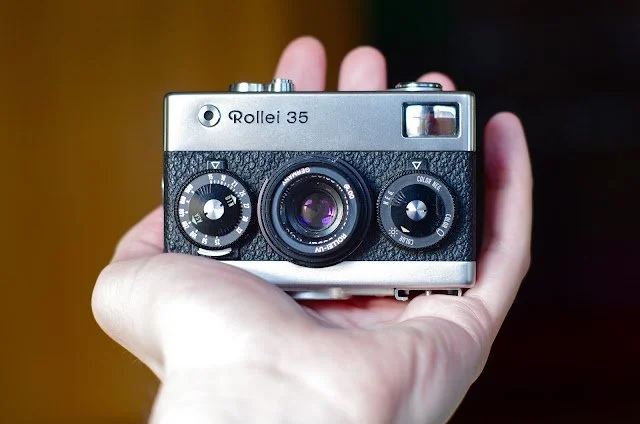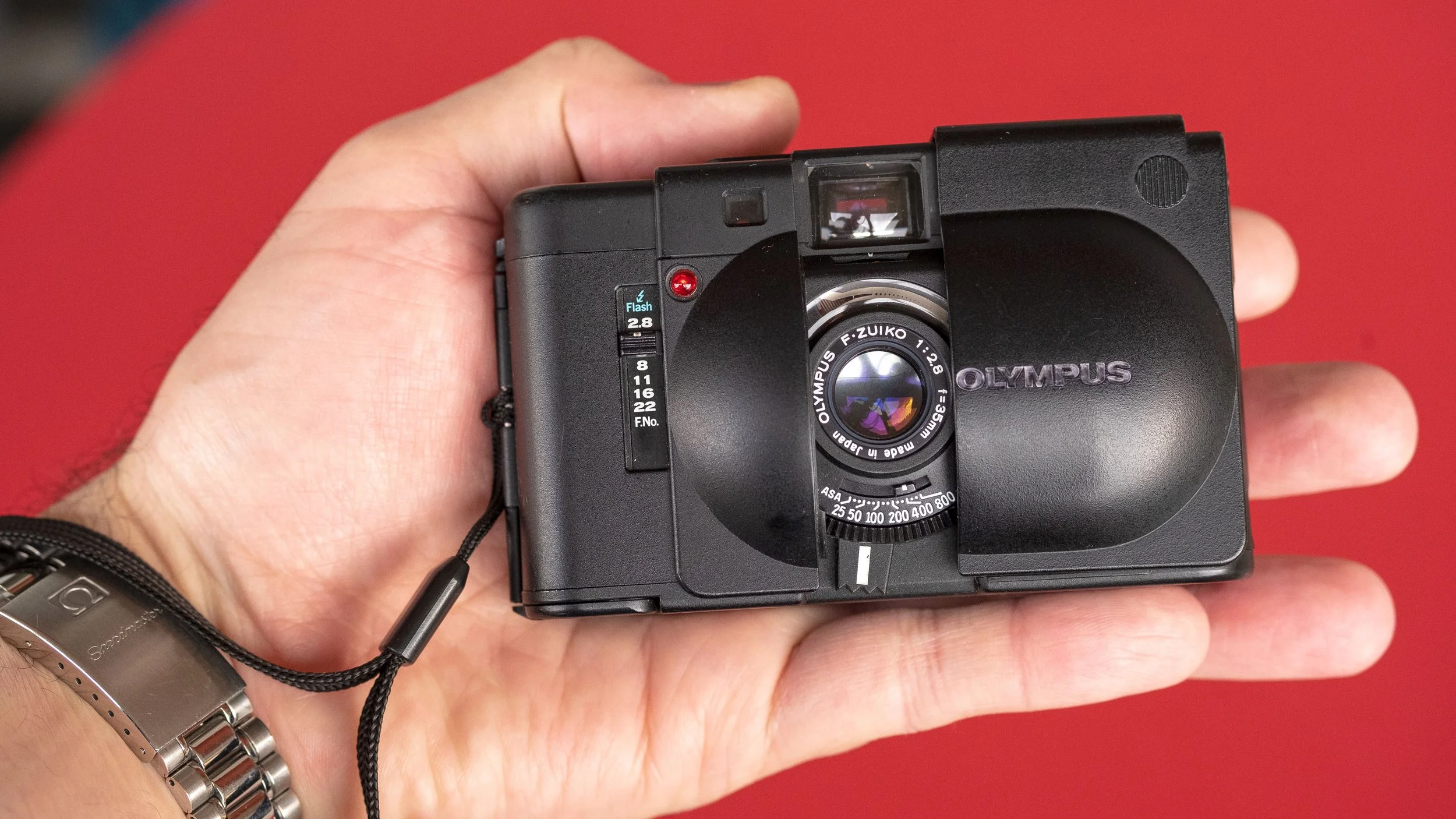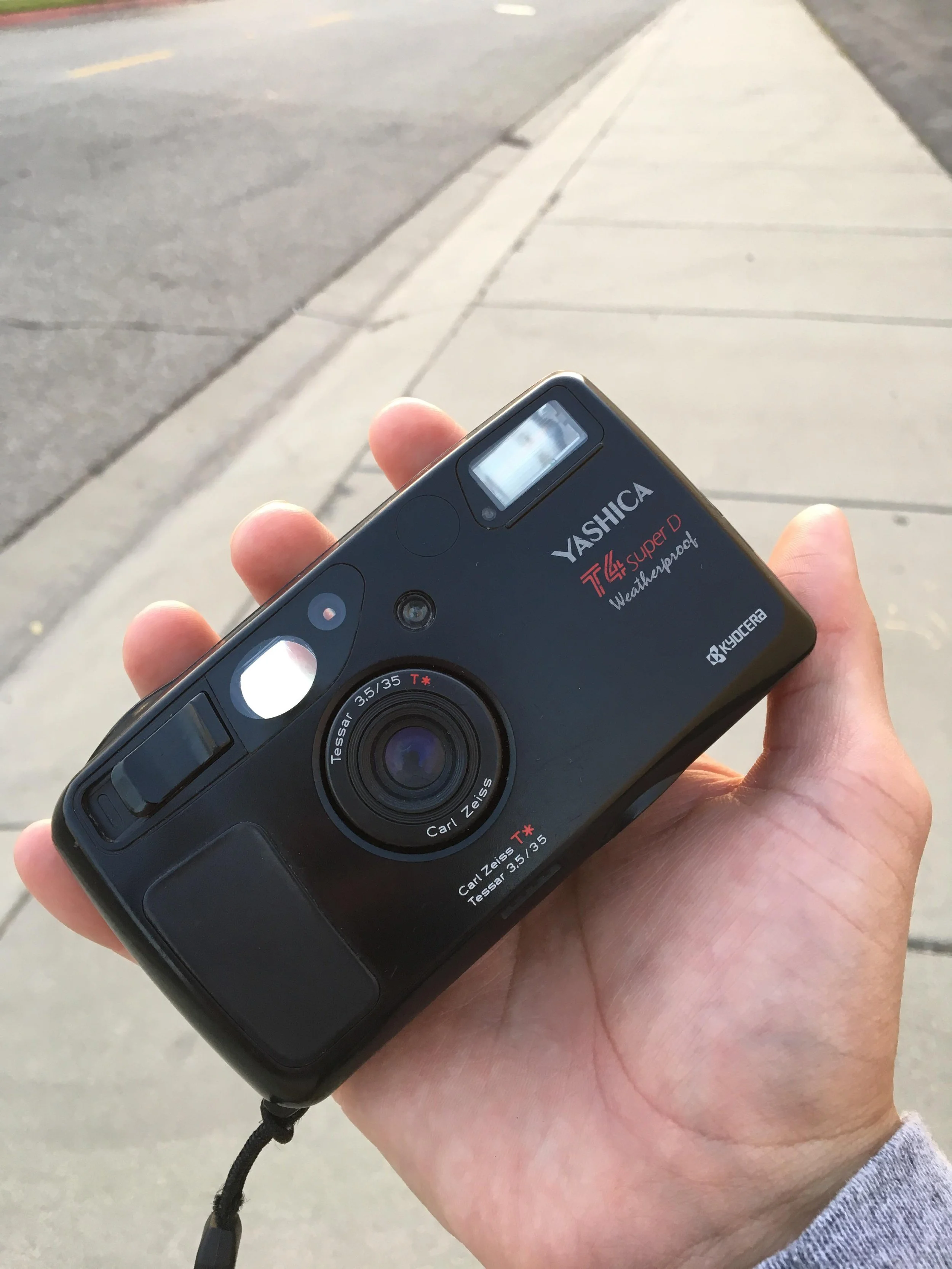6 Most Discreet 35mm Cameras for Street Photography
Street photography requires a 35mm film camera that is not only capable but also unobtrusive. Discretion is key when capturing candid moments in public spaces, especially if you’re new to street photography and want to remain covert. Here’s a look at six of the most discreet 35mm cameras that are perfect for shooting on the street. Each camera offers a unique blend of portability, functionality, and image quality, making them favorites among street photographers.
1. Rollei 35
Overview/History
Introduced in 1966, the Rollei 35 was the smallest 35mm camera in the world at the time of its release. Despite its compact size, it packs a punch with its precision German engineering and iconic design. The 35mm film camera is fully manual, making it a great choice for those who prefer complete control over their shooting.
Specs
Lens: Zeiss Tessar 40mm f/3.5 or Sonnar 40mm f/2.8
Shutter Speeds: 1/2s to 1/500s + Bulb
Metering: Built in, uncoupled meter
Weight: 370g
Pros
Exceptionally compact, pocketable, and discrete
High quality Zeiss optics
Fully mechanical operation
Classic, stylish design
Cons
Scale focusing can be tricky
No rangefinder or autofocus
Quality for Size
The Rollei 35 delivers high quality images with its Zeiss lens in an ultra compact body. Its manual operation might require some getting used to, especially handing its miniature controls but for those who appreciate craftsmanship, it's a joy to use for street photography.
2. Konica Big Mini
Overview/History
The Konica Big Mini, released in the early 1990s, is a lesser known gem among compact 35mm cameras. Its sleek design and ease of use make it an excellent choice for street photographers who want a no fuss film camera that delivers sharp, well exposed images. This film camera can act as a cheaper alternative to something like the T2, with a similar form factor at a fraction of the price.
Specs
Lens: Konica 35mm f/3.5
Shutter Speeds: 1/8s to 1/250s
Metering: Programmed AE
Weight: 195g
Pros
Ultra compact and lightweight
Simple point and shoot operation for quick street shots
Sharp, contrasty lens
Affordable and often overlooked
Cons
Limited manual control
Plastic build feels less durable, known to be quite fragile
Quality for Size
The Konica Big Mini offers impressive image quality for its size, with a sharp lens that rivals more expensive compact film cameras. Its ease of use and pocketability make it a fantastic option for street photographers looking for a discrete tool.
3. Ricoh GR1v
Overview/History
The Ricoh GR1v, introduced in 2001, is the most advanced version of the GR1 series. Known for its sharp 28mm lens and minimalist design, it’s a favorite among street photographers who value a real portability and simplicity.
Specs
Lens: Ricoh GR 28mm f/2.8
Shutter Speeds: 2s to 1/500s
Metering: Multi pattern
Weight: 175g
Pros
Ultra compact and lightweight
Excellent 28mm wide angle lens
Snap focus mode for quick street shooting
Simple and intuitive controls
Cons
Fragile build quality
LCD display is known to be prone to issues
Quality for Size
The GR1v’s sharp lens and pocket friendly size make it an ideal choice for street photography. Its snap focus mode allows for fast and accurate shooting, ensuring you never miss a moment, especially if you’re a beginner less versed in manual controls.
4. Minolta TC-1
Overview/History
Launched in 1996, the Minolta TC-1 is a high end compact 35mm film camera that’s often overlooked but revered by those who know it. It features a unique, retractable 28mm lens and is one of the smallest full frame 35mm cameras ever made. The TC-1 is renowned for its exceptional optical performance. Images produced by the TC-1 are known for their sharpness, contrast, and overall clarity. The lens renders colors beautifully, with natural tones and minimal chromatic aberration. Even when shooting wide open at f/3.5, the lens produces crisp images with a pleasing level of background blur. The TC-1 also includes spot metering, which is rare in compact film cameras. This allows for precise exposure control, particularly in challenging lighting conditions. The spot metering function can be accessed via a dedicated button, enabling film photographers to lock exposure based on a small area of the scene.
Specs
Lens: Minolta G-ROKKOR 28mm 1:3.5.
Shutter Speeds: 1s to 1/700s
Metering: Multi pattern
Weight: 200g
Pros
Excellent Zeiss lens
Weatherproof design
Simple and easy to use
Compact and lightweight
Cons
Limited manual control
High price due to demand
Quality for Size
The Minolta TC-1 is designed for photographers who appreciate precision and attention to detail. The 35mm film camera’s controls are thoughtfully laid out, with a focus on ease of use and quick adjustments. The retractable lens design not only protects the lens when not in use but also contributes to the film camera’s sleek profile. Its weatherproofing and ease of use make it a reliable choice for street photographers who need a 35mm film camera they can take anywhere.
5. Olympus XA
Overview/History
The Olympus XA, released in 1979, is a compact rangefinder film camera that quickly became popular for its innovative clamshell design. The Olympus XA was the first in a series of 35mm film cameras that included various models with different features, but the original XA remains the most beloved. It was a true innovation, combining a high quality Zuiko lens with a precise rangefinder focusing system, all housed in a sleek, durable clamshell design that protected the lens and prevented accidental exposure. Designed by Yoshihisa Maitani, the XA is one of the smallest rangefinder cameras, making it perfect for discreet shooting.
Specs
Lens: Olympus F.Zuiko 35mm f/2.8
Shutter Speeds: 1s to 1/500s
Metering: Aperture-priority automatic
Weight: 225g
Pros
Compact and pocketable
Silent, electronic shutter
Aperture-priority mode
Durable clamshell design
Cons
Manual focusing can be tricky
Slightly slower lens
Quality for Size
The Olympus XA combines a sharp lens with a compact design, making it one of the most portable rangefinders available. Its discreet appearance and near silent operation make it a favorite for street photographers who value stealth.
6. Yashica T4
Overview/History
The Yashica T4, introduced in 1992, became a cult favorite due to its Carl Zeiss lens and simple, rugged design. Despite being marketed as a consumer point and shoot, its lens quality has made it a popular choice for serious street photographers. The 35mm film camera features fully automatic exposure control, which means that it selects both the aperture and shutter speed based on the lighting conditions. This makes the T4 extremely easy to use, as it requires minimal input from the photographer, allowing focus on composition and timing. The 35mm film camera’s quick operation and reliable autofocus system make it ideal for capturing spontaneous moments, a key requirement for street photography. The fixed 35mm lens is versatile, providing a natural perspective that works well for a variety of subjects.
Specs
Lens: Carl Zeiss T Tessar 35mm f/3.5
Shutter Speeds: 1s to 1/700s
Metering: Multi pattern
Weight: 200g
Pros
Excellent Zeiss lens
Weatherproof design
Simple and easy to use
Compact and lightweight
Cons
Limited manual control
High price due to demand
Quality for Size
The Yashica T4 delivers a combination of a high quality Zeiss lens, user friendly design, and durable, weatherproof build making it an excellent choice for street photographers, travelers, and anyone who values simplicity and portability in a camera. Despite its fully automatic operation, the T4 delivers exceptional image quality, making it a reliable tool for capturing spontaneous moments and candid scenes.
If you enjoyed this article, or any of our other blogs please be sure to visit nicefilmclub.com for all your film development and scanning needs!






